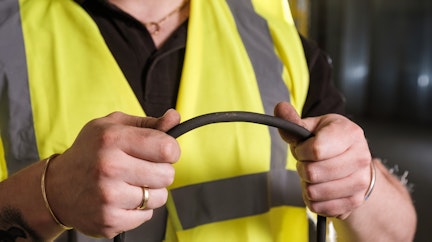How to Check the Fuse in the Mains Plug
Checking BS1362 fuse in a BS1363 Mains Plug
One of the issues people often get confused about when they first start PAT Testing, is how to check that the correct fuse is fitted in the plug. Of course, the job of the person carrying out the PAT Test (or rather the visual inspection) is to check that the fuse fitted is SUITABLE, not simply to write down the value of the fuse that is fitted!
So far, we have two methods for selecting the fuse:-
- According to BS1362 and the IET Code of Practice we should fit a 3A fuse where the appliance is rated at 700W or less, and a 13A fuse when the appliance is rated at more than 700W. This is the simple method, aimed at the general public.
- We have also said that the purpose of the fuse in the mains plug is to protect the cable, and so a more sensible approach is to check that the fuse in the plug is thick enough to carry the current, and then make sure that the fuse is rated such that the cable is protected.
Sometimes the two methods overlap, and we have to use a little common sense and judgement to make sure that the cable and fuse are suitable.
As we know, older appliances were not always supplied with a mains plug fitted, and often the user of the appliance would fit a plug with a 13A fuse, without any thought to whether it was the right fuse. If we find these appliances now, we need to consider whether it is appropriate to replace the fuse with a smaller one.
Modern electrical appliances designed for domestic or consumer use have to be fitted with a BS1363 plug, fitted with the correct cable and an appropriate plug fuse. So it is safe to assume that a new piece of equipment will have the correct cable, plug and fuse, provided it has come from a reputable supplier and has not been modified since it was purchased.
The older the appliance is, the more likely it is that the wrong fuse is fitted.
A simple solution...
- If we find a piece of equipment which is fitted with a 3A fuse, then we do not need to take any action. The fuse must be acceptable (provided that the equipment is working properly.)
- If it’s fitted with a 5A, 7A or 10A fuse, then it is PROBABLY ok, but we may need to check. A 5A fuse is fine if the appliance is rated at less than 1200 Watts, but if it’s less than 700W we might want to change it to a 3A, especially if the mains cable is 3A (0.5mm2 cable)
- If it’s fitted with a 13A fuse, then we need to decide whether this is acceptable.
- If the appliance is very old, then we need to consider whether or not it was supplied with a mains plug, and if it wasn’t, who put the plug on when it was new? If it was supplied without a plug, it is likely that the person fitting the plug used a 13A fuse without any consideration for whether it was suitable or not. In this case, if the appliance is less than 700W it should be changed to a 3A, or if it’s less than 1200W it should be changed to a 5A.
- If, however, the appliance is relatively new, and we believe that it was supplied with a fitted plug, then we can pass it with a 13A fuse, provided that the power rating is more than 700W – in this case the manufacturer have used the BS 1362 method described above, and fitted a 13A fuse to save on cost.
- If, however, the appliance is relatively new, and we believe that it was supplied with a fitted plug, then we can pass it with a 13A fuse, provided that the power rating is more than 700W – in this case the manufacturer have used the BS 1362 method described above, and fitted a 13A fuse to save on cost.
- There is always room for a little common sense and judgement!
For detachable mains leads
- Use a 3A or a 5A fuse for a 'figure of 8' mains lead on a radio
- Use a 5A, 7A, 10A or 13A for a normal IEC computer lead (often these are supplied with a 13A fuse from new)
- Use a 3A or a 5A for a laptop power lead (the clover leaf or Mickey Mouse connector)
You might also be interested in...

Microwave Leakage Test
Testing the Safety and Integrity of a Microwave Oven.

Earth Leakage Testing in PAT Testing
The aim of this article is to clear up some confusion about the earth leakage test.

How to Choose a PAT Tester for Testing 110V Appliances
Explaining some issues surrounding testing 110V Power Tools, and how to choose a suitable PAT Tester.